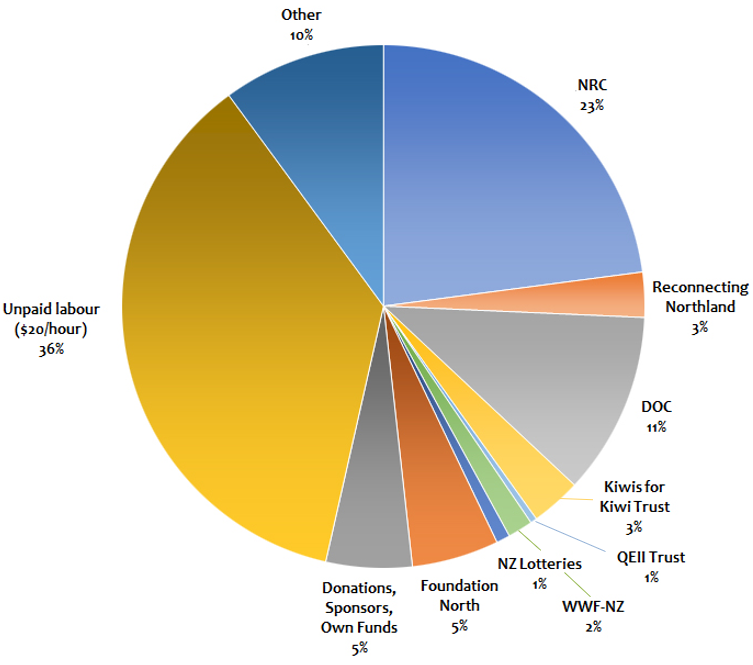Kiwi Coast’s latest number crunching shows community groups contribute close to $1 million worth of unpaid voluntary labour each year as they battle with animal pests to ensure Northland kiwi and forests survive.
The Kiwi Coast Trust collated data from the 120 entities linked into the collaborative initiative for the 2017/18 financial year to establish the total worth of all the projects and investigate how costs were covered.
“The combined total over that 12 month period was a staggering $2,570,173”, said Kiwi Coast co-coordinator Ngaire Sullivan. “That included things like traps, toxins, monitoring equipment, communications and time spent checking traps – whether paid or unpaid.”
Unpaid or voluntary labour, valued at only $20 per hour for the assessment, was the single biggest amount at $934,550 – contributing over a third of the resources going into practical conservation action on the Kiwi Coast.
“This demonstrates the huge reliance conservation in New Zealand has on people volunteering their time and working without pay to ensure our native wildlife and forests can thrive,” said Ngaire Sullivan.

After crunching the numbers for all the groups and projects she said the collective result was “pretty staggering.”
“We owe huge thanks to all those hard working landowners and communities out there checking traps, monitoring kiwi on cold winter nights, doing the paperwork – all for the love of our native forests and wildlife. Imagine what Northland would be like without them…?”
Kiwi Coast Trustee and Tutukaka Landcare Coalition founder Mike Camm said he hoped the assessment would lead to more funders offering multi-year support and contributing to administration costs.
“They need to understand that long-term projects aimed at threatened species recovery and in particular kiwi survival, need funding for more than 1 or 2 year terms”.
The biggest unpaid project component identified in the assessment was administration, with groups providing 84% of project management, report writing, financial reporting and the essential work of keeping their group going, for free.
This was despite an increasing expectation from many funders that volunteer community groups should operate with similar processes to professional organisations in terms of financial systems, health and safety procedures, data collection and long term business plans, said Mike Camm.
Marj Cox has been coordinating the Mahinepua-Radar Hills Landcare Group for over ten years.
“In one year I spent 2500 hours doing administration work for our landcare group. The endless report writing and funding applications take us away from the real work we set our group up to do – control pests and save kiwi” says Marj.
After unpaid and voluntary labour, Northland Regional Council (NRC) was the next biggest resource provider for work on the Kiwi Coast, contributing 23% or $588,978 worth of traps, toxins, staff time and direct funding through its partnership agreement with the Kiwi Coast.
The recently adopted Long Term Regional Plan will see this amount dramatically increase over the next few years as the new Pest Control Rate introduced in 2018 helps to contribute further funds for combating pests and biosecurity threats in Northland.
For many projects linked into the Kiwi Coast landowners were happy to “get on with the job” if supplied with the hardware needed such as traps and toxins, said Ms Sullivan.
Kiwi Coast Trust brought in $226,188 of it’s own funding during the year to help sustain the projects involved with its vision of creating New Zealand’s first kiwi corridor.
Over half (52%) of Kiwi Coast’s operational funds went to supporting groups with paid professional predator trappers targeting strategic areas and in providing additional traps for volunteers to fill key gaps in trapping networks.
The trust also provided on-the-ground assistance with operational reviews. Skill building workshops, in particular well attended Trapper Training Days and community-led kiwi releases, accounted for 21 per cent of the spending.


